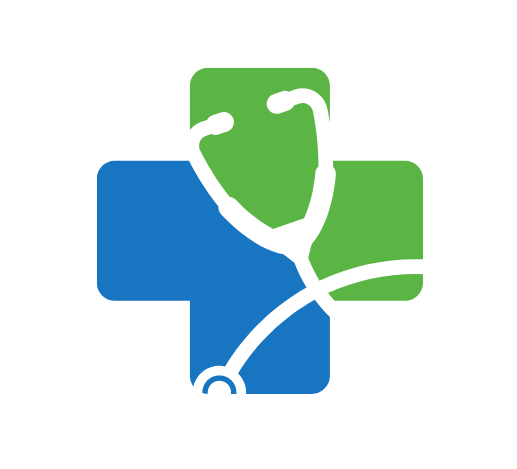
Imagine being prescribed a long-term medication without understanding its risks or alternatives. That’s a common patient experience in systems where medical decisions are made unilaterally. But healthcare is evolving. Shared decision making (SDM) isn’t just a trend—it’s becoming a standard. Instead of telling patients what to do, clinicians now invite them into the decision process. This shift doesn’t reduce the physician’s role; it enriches it. Patients feel empowered, and clinicians gain deeper insight into values that affect adherence and satisfaction. In Türkiye and many parts of Europe, this method is reshaping medical ethics.
What shared decision making really looks like in daily clinical settings
Shared decision making involves more than just asking, “What do you think?” It’s a structured dialogue. A physician outlines options, evidence, and potential outcomes in clear, understandable terms. The patient then shares preferences, lifestyle needs, and concerns. Together, they arrive at a tailored decision. In practice, this could mean discussing different pain management strategies after surgery or weighing the pros and cons of a diagnostic test. These aren’t casual chats. They’re informed discussions guided by trust, empathy, and mutual respect. In busy clinics, they require skill and planning, but the benefits are measurable.
Clinical outcomes improve when decisions reflect personal values
Research has shown that patients involved in shared decisions often report higher satisfaction and better adherence. This isn’t just emotional—it’s clinical. When people choose treatments that align with their beliefs, they’re more likely to follow through. For example, in oncology, where treatments can be aggressive and options complex, SDM helps patients feel control amid uncertainty. Even in primary care, choosing a lifestyle intervention over medication may come down to value alignment. Doctors who understand this dynamic help reduce unnecessary interventions and increase patient confidence.
Cultural context plays a crucial role in decision preferences
A patient’s cultural background often shapes how they approach decision making. In Türkiye, for example, many still defer to physician authority out of respect. But newer generations expect transparency and autonomy. In Dubai, where clinicians serve a highly multicultural population, cultural sensitivity becomes even more vital. Some patients want detailed data; others seek emotional reassurance. Recognizing these patterns ensures that shared decision making doesn’t become a rigid protocol but remains flexible and personal. Clinicians trained in cross-cultural communication adapt more easily to these nuances.
Tools that support shared decision making are becoming essential
Many clinics now use visual aids, decision grids, and digital platforms to streamline SDM. These tools help clarify choices and communicate probabilities. For example, a chart comparing treatment side effects or a tablet-based quiz assessing patient priorities. These aren’t gimmicks—they support memory retention and help avoid misunderstandings. In Türkiye, several teaching hospitals have adopted SDM checklists to train interns. The point isn’t to replace conversation but to make it more meaningful. Especially in multilingual contexts, visual communication bridges language gaps effectively.
Time constraints challenge the consistency of shared decision making
One of the biggest barriers to shared decision making is time. In busy outpatient settings, doctors often have under 15 minutes per patient. It’s tempting to revert to fast, unilateral decisions. But studies suggest that even brief SDM sessions—when structured—can be effective. Clinicians who use open-ended questions early in consultations create a space where decisions unfold naturally. Delegating parts of the conversation to nurses or patient educators also helps. Investing time upfront often saves time later by preventing confusion, repeat visits, or patient dissatisfaction.
Communication training should start early in medical education
Many physicians were never formally trained in shared decision making. That’s changing. In İstanbul and Ankara, medical faculties now include SDM modules in communication courses. Students practice case scenarios that highlight ethical gray zones, emotional distress, and linguistic barriers. These early exposures make future doctors more adaptable and empathetic. Across Europe, hospitals that invest in communication coaching for their staff report higher patient satisfaction. Learning how to navigate complex dialogues isn’t instinctive—it’s a teachable skill. Like any procedure, it improves with feedback and repetition.
Patients also need preparation to participate meaningfully
It’s easy to assume that all patients want to make decisions. Some don’t. Fear, uncertainty, or deference to authority may hinder their participation. Educating patients about their role in the decision-making process helps. Pre-visit questionnaires, brochures, or group sessions can prepare them to speak up. In Türkiye, some community clinics now include a “patient navigator”—a healthcare worker trained to guide people through appointments. When patients know that their input is welcome, they’re more likely to engage. Shared decision making is a two-way street, not a one-sided performance.
Legal and ethical dimensions align with SDM principles
Shared decision making isn’t just good practice—it has legal weight. Informed consent laws increasingly emphasize discussion and documentation of choices. If patients weren’t offered options or their concerns were dismissed, disputes can arise. Ethically, SDM aligns with the principle of respect for autonomy. It also upholds beneficence by ensuring patients receive treatments they understand and believe in. In both Türkiye and Dubai, medical institutions are updating consent forms to reflect this process. Proper documentation of SDM protects both the patient and clinician.
Shared decision making strengthens long-term relationships
The best healthcare experiences are rarely about single encounters. They’re built over time. When doctors include patients in decisions, trust deepens. Follow-up visits become smoother, and patient histories gain context. People stop feeling like numbers and start feeling like partners. That partnership often leads to healthier behaviors, earlier diagnoses, and fewer complications. In multidisciplinary teams, shared decision making also fosters better internal communication. Nurses, therapists, and doctors align around patient goals. This collaborative mindset benefits the whole system, not just the individual.

 then "Add to Home Screen"
then "Add to Home Screen"